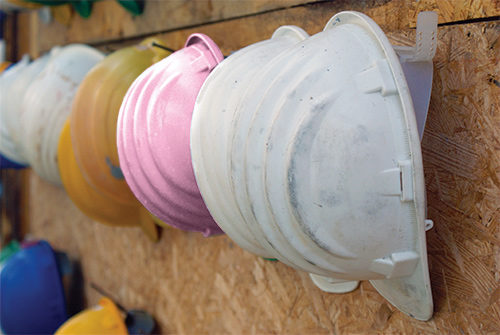Gender blind
Protecting the safety of women in the workplace

DeAngelis noted that these policies should come from the top down – that employers need to stress the importance of a discrimination-free workplace to supervisors who should enforce it among workers. Kathy Fiebig, a self-employed painter and remodeler in Lakewood, CO, believes a supervisor’s response to discrimination or harassment needs to be decisive. “There should be an immediate, strong response,” she said. “Write the offender up. Suspend him. Don’t just say ‘stop it.’”
Electrician Kelly Kienleitner offers the following for a harmonious workplace: “Please stop seeing us as women – we are trades people. We just want to work and be treated like everyone else.”
Strength in numbers
The main push of Martin’s organization is to get a “critical mass” of women in the industry, believing this will improve conditions. DeAngelis echoed this sentiment. “The more women there are on a specific worksite, the less likely intimidation will occur,” he said, “so efforts to get more women into nontraditional jobs in construction and other industries are very important.” He went on to cite 2008 data from the Bureau of Labor Statistics indicating women make up only 2.5 percent of construction and extraction workers. “We may never be at 50 percent,” Sandu said, “but I think we can do better than 5 percent.”
Fiebig has even loftier goals. “Perhaps we’ll actually reach a point where there are no traditionally male jobs,” she said. “That would be a beautiful thing.”
Equity in PPE
Personal protective equipment is intended to protect workers from hazards on the job. But PPE cannot perform optimally if it does not fit properly.
The 1999 report from OSHA’s Health and Safety of Women in Construction workgroup and the Advisory Committee on Construction Safety and Health found that ill-fitting PPE was a major problem for women in trades. Women surveyed reported having to wear multiple pairs of socks to fit into work boots designed for men, and having to roll up sleeves and pant legs on overly large protective clothing. Since that time, the issue of properly fitting PPE has been more widely recognized. “Industries have often adjusted to meeting the needs of women,” said Terri Sandu, founder of the Cleveland-based Hard Hatted Women. She noted that whole businesses have been developed with the recognized need for specialized tools and safety equipment for women.
Yet women-specific PPE is still not the norm on many worksites. “Rigging PPE to fit, with rubber bands, duct tape, etc., is very common,” said Melina Harris, president of Sisters in the Building Trades, a nonprofit organization based in Kent, WA. “I, and many women and smaller men, buy their own or rig what they get.” She noted that once when working on an oil spill she had to be duct taped into her hazmat suit each morning.
Sandu noted that designing products and tools to help women work more effectively can improve the safety of everyone on the worksite – both men and women – and points to the invention of a tool to lift manhole covers as one example of this. “For women it was really difficult to lift them,” she said, “but it was also very physically challenging for men.” In this case, focusing on protecting women protected the entire workforce.
Kathy Fiebig, a self-employed painter and remodeler in Lakewood, CO, said advances made in tools also have helped women. “Tools overall are getting lighter and smaller,” she said, “which really helps. Titanium framing hammers were not designed with women in mind, but they suit us well.”
Inadequate PPE for women is an issue that has been noted by OSHA, according to agency spokesperson Richard DeAngelis. “As more and more females have entered the workforce, they often have had to choose between wearing PPE that was sized to fit males and not wearing PPE at all,” he said. “As a result, female workers frequently either have used PPE which did not adequately protect them, or have simply stopped using PPE because of improper fit and subsequent discomfort,” he said. DeAngelis said OSHA is revising its PPE standard to include proper fit as a criterion for PPE selection, noting that proper fit is a concern for many male workers as well.
– LC
Post a comment to this article
Safety+Health welcomes comments that promote respectful dialogue. Please stay on topic. Comments that contain personal attacks, profanity or abusive language – or those aggressively promoting products or services – will be removed. We reserve the right to determine which comments violate our comment policy. (Anonymous comments are welcome; merely skip the “name” field in the comment box. An email address is required but will not be included with your comment.)

